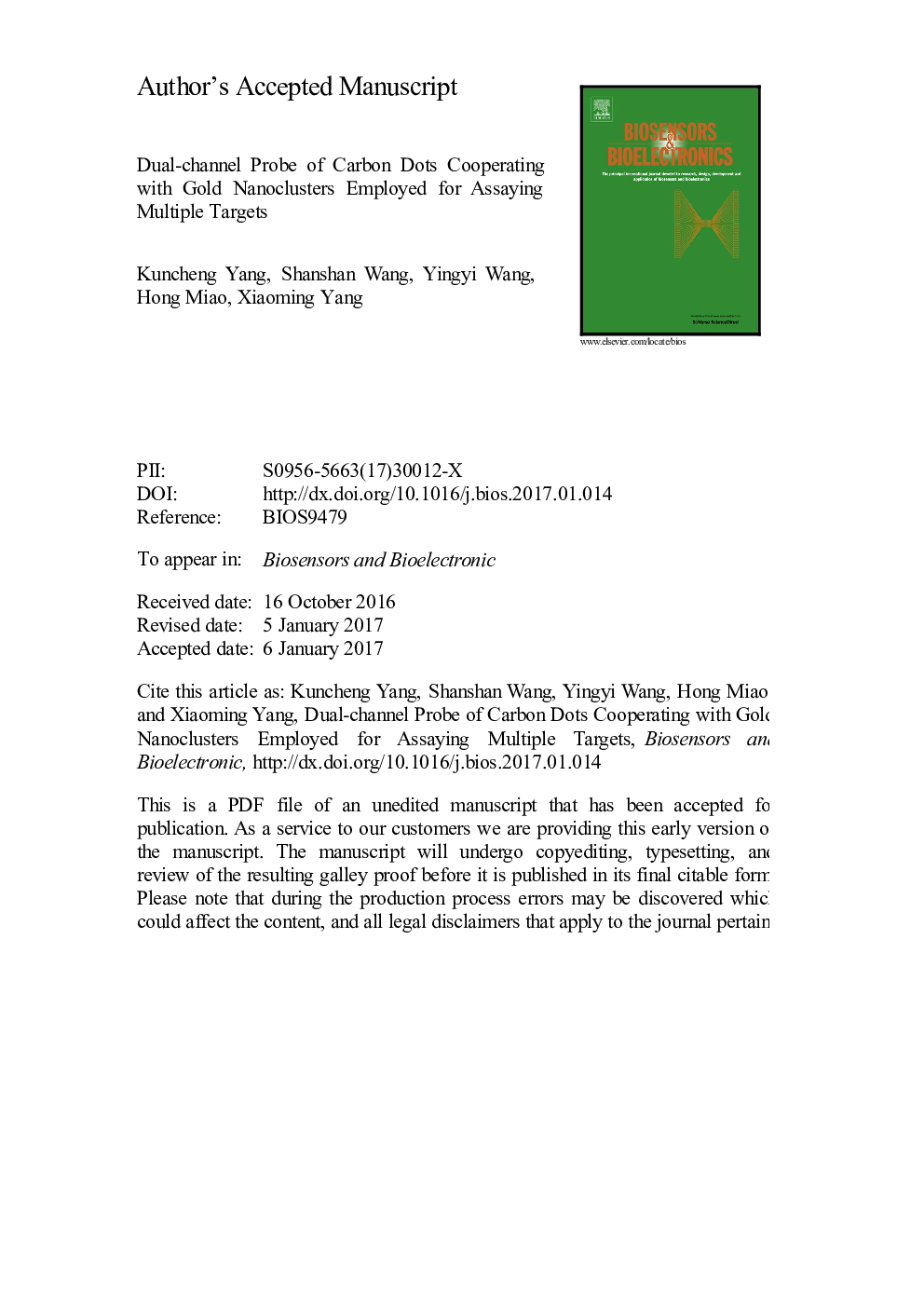| Article ID | Journal | Published Year | Pages | File Type |
|---|---|---|---|---|
| 5031194 | Biosensors and Bioelectronics | 2017 | 25 Pages |
Abstract
Herein, carbon dots (CD@Papain) from papain have been originally synthesized in aqueous solution along with a quantum yield of 6.2%, and showed cyan fluorescence at 435Â nm. Meanwhile, papain-templated Au nanoclusters (AuNCs@Papain) were prepared with the same precursor. On the basis of the two types of nanomaterials, CD@Papain and AuNCs@Papain have been designed to assemble as one nanosensor (termed as CD-AuNCs@Papain) through a typical cross-linking reaction. Significantly, it not only emitted the dual-emission fluorescent signals with the same excitation, but also can assay multiple targets through exhibiting cyan, yellow, and red emission respectively. Thereby, H2O2, doxycycline and I- can be detected by CD-AuNCs@Papain. The mechanism of the fluorescence variations of CD-AuNCs@Papain: Au(0) of CD-AuNCs@Papain oxidized as Au(I) by H2O2, the formation of hydrogen bonds between the CD-AuNCs@Papain and I-, the inner filter effect (IFE) occurring caused by tetracyclines. Meanwhile, the detection limits of H2O2, doxycycline and I- were obtained as 0.3Â nM, 0.2Â nM, and 0.6Â nM at a signal-to-ratio of 3, respectively. These results suggested that the nanoprobe here has provided the possibility for rapidly assaying multiple targets with the acceptable selectivity.
Related Topics
Physical Sciences and Engineering
Chemistry
Analytical Chemistry
Authors
Kuncheng Yang, Shanshan Wang, Yingyi Wang, Hong Miao, Xiaoming Yang,
